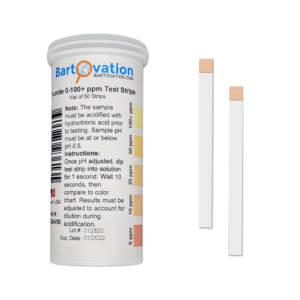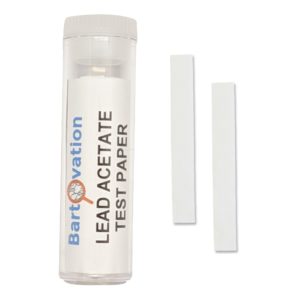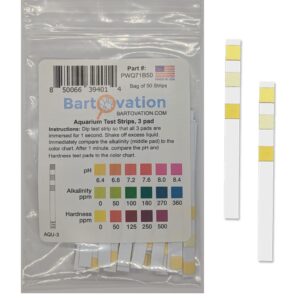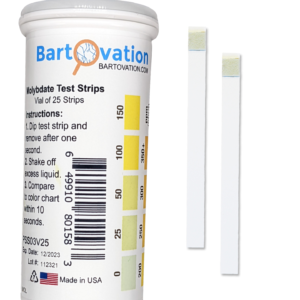Description
These test strips are widely used in Tropical Fish Tank ,Breeder Tank, Pond, Betta Tank, Shrimp Tank.
Studies have shown that ammonia can affect fish growth, osmotic pressure balance, metabolic activities, and can cause some damage to fish. And ammonia in an aquarium can come from several sources, including fish waste, uneaten food and other decaying matter. It is necessary to test ammonia for your fish regularly. Know your fish better, give fish a healthy safe aquarium environment.
How to test for ammonia:
- Remove one test strip from the container then close the bottle.
- Dip the test strip into the water to be tested so that the pad is immersed.
- Keep the pad submersed for 5 seconds.
- Remove test strip, and shake off excess water.
- Compare strip to the color chart after 1 minute.
The Ammonia test strips are used to test for tank contaminants in aquariums and will detect the presence of ammonification from protein degradation. The chart reads 0-6ppm, 0ppm being ideal, 0.5 to 1.0ppm being stressed, and 3.0-6.0ppm being dangerous. It conveniently also has marked on the bottle what the readings mean – so you can know when corrective action is needed. The pH indicator pad in the Ammonia test strip is constructed to react only to the gaseous ammonia generated by the alkaline environment on the first test pad. The unique construction of the strip reduces, and in some cases eliminates the potential for many interferences, such as CN-, Fe, Mn, Ca, etc.
The strip is composed of two filter pads. The first filter pad acts as an absorbent and takes up the water sample. The first pad has been treated with alkaline materials. This alkaline environment converts any ammonia to the gaseous state. The second filter pad is an hydrophobic material that has been treated in such a manner that only the gaseous ammonia is absorbed by the second filter pad. The second filter pad contains an indicator(s) capable of detecting the gaseous ammonia through a change in the pH of the filter pad

![Ammonia NH3 Test Strips <span class="bldppm">0-6 ppm</span> for Aquarium, Fish Tank and Pond Monitoring [Vial of 25 Strips]](https://bartovation.com/wp-content/uploads/2020/11/amm-06-main-w-strips.png)
![Ammonia NH3 Test Strips <span class="bldppm">0-6 ppm</span> for Aquarium, Fish Tank and Pond Monitoring [Vial of 25 Strips] - Image 2](https://bartovation.com/wp-content/uploads/2020/11/71OGjggcKIL._SL1500_.jpg)
![Ammonia NH3 Test Strips <span class="bldppm">0-6 ppm</span> for Aquarium, Fish Tank and Pond Monitoring [Vial of 25 Strips] - Image 3](https://bartovation.com/wp-content/uploads/2020/11/Ammonia-6ppm-label-1.jpg)



